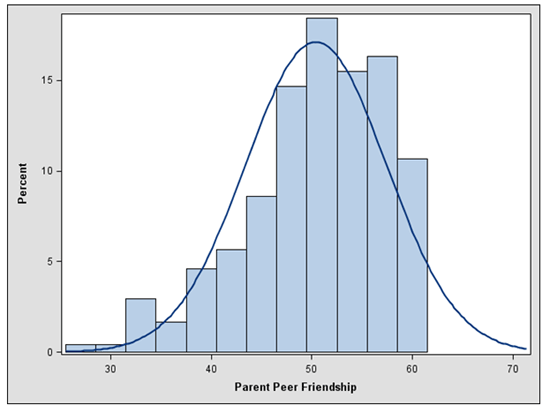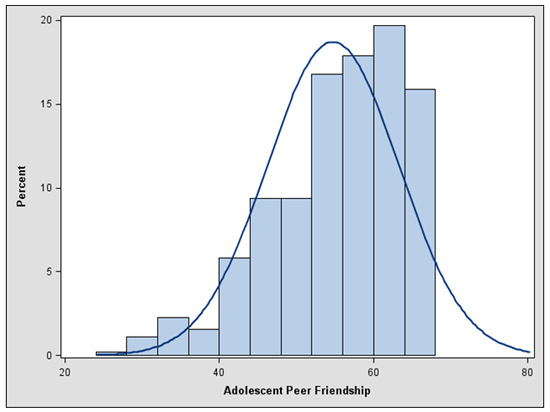Positive Friendships with Peers
Definition
Peer friendships with peers characterized by the mutual experience of:
-
Support and encouragement
-
Affect (caring, validation)
-
Companionship
-
Loyalty/standing up for one another
-
Trust
Parent Scale
Please indicate how much these statements describe your child. (Not at all like my child, A little like my child, Somewhat like my child, A lot like my child, Exactly like my child)
-
My child finds it hard to make friends
-
My child finds it hard to keep friends.
-
My child would stand up for his/her friend.
-
My child takes advantage of his/her friends.
Please indicate how much you agree or disagree with the following statements. I have a friend who…(Strongly agree, Somewhat agree, Neither agree nor disagree, Somewhat disagree, Strongly disagree)
-
helps him/her when he/she is down.
-
will give him/her good advice.
-
helps him/her to do the things he/she needs to do.
-
makes him/her feel good about himself/herself.
-
does things to show he/she cares about him/her.
-
he/she can do fun things with.
-
he/she can count on to be there for him/her.
Parent Scale Psychometric Properties and Fit Indices
We conducted confirmatory factor analysis (CFA) to examine whether responses to the scale appeared to measure a single construct. Along with Cronbach’s alpha, we present model fit indices below.

-
Alpha=0.86 (excellent)
-
CFI=0.995 (excellent)
-
TLI=0.993 (excellent)
-
RMSEA=0.061 (adequate)
Adolescent Scale
Please indicate how much these statements describe you. are (Not at all like me, A little like me, Somewhat like me, A lot like me, Exactly like me)
-
I support my friends when they do the right thing.
-
I encourage my friends to be the best they can be.
-
I help close friends feel good about themselves.
-
I am there when my friends need me.
-
I would stand up for my friend if another kid was causing them trouble.
Adolescent Scale Psychometric Properties and Fit Indices

-
Alpha=0.91 (excellent)
-
CFI=0.995 (excellent)
-
TLI=0.993 (excellent)
-
RMSEA=0.066 (adequate)
Subgroup Model Fit
We tested the final adolescent and parent models with subgroups to examine whether the model fit for different subsets of respondents in the same manner as the overall sample. Using the same fit statistic requirements as the overall models, a check mark indicates that the model fit for the subgroup. Due to relatively small sample sizes and sparse categorical responses, resulting in too many bivariate empty cells, we were not able to fit all of the models. The subgroups for which we were not able to fit a model are indicated with N/A. Household income is defined as “low” if it is less than the median income in the sample. “High” household income indicates that the household income was equal to or greater than the sample’s median.

Concurrent Validity
Four single item measures were used to examine the concurrent validity of the adolescent scale: a measure of social behavior (fighting), a measure of health behavior (smoking), a measure of emotional health (adolescent-reported depressive symptoms), and a measure of cognitive development (grades).
Concurrent validity was examined in two ways: with bivariate and multivariate analyses. The table below presents the results of multivariate analyses, which control for: teen gender, teen age, teen race, household income, household size, parental education, parental marital status, parental home ownership, parental employment, and metropolitan area and region of residence. The beta coefficient of the relationship between the construct’s scale and outcome is presented.

© Copyright 2025 ChildTrendsPrivacy Statement
Newsletter SignupLinkedInYouTubeBlueskyInstagram